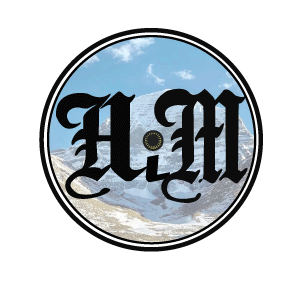Northeast Himalayan region is in for a season of festivals- Drumbeat and Hornbill- a smorgasbord of music, clour and dance as the coronavirus -19 pandemic has eased up after a gap of two years. The promoters hope that the region expects a revival of the slack tourism industry hit badly by the pandemic.
Legendary 44th Hundred Drumbeat Wangala festival-21 started today in Wangala in west Garo hills. It has sent its heart-warming drum beats ringing not only in Meghalaya, the land of sparkling clouds, but also in the entire Himalayan states and the rest of the country.
Another king of festival waiting in wings is Hornbill festival at Kisma in Nagaland, starting from December 1 that will last for 10 days. It gives a stunning glimpse of the Naga culture and its cuisines. Naga chefs competition is held to select a top chef to celebrate the feast.
Different Naga tribes converge to Kisma for what is feted as “festival of festivals”- a smorgasbord of music, dance and colour. They perform folk dances, war dances and songs and tribal war games and sports in their colourful unique antique dresses upholding their tribal identity.
These festivals are a big tourist draw every year, but their celebrations were eclipsed by the pandemic for the last two years. Hornbill festival alone attracted over 96000 foreign tourists in 2019, say the promoters.
This year, no doubt all the Himalayan states including Northeast and Himachal Pradesh, Uttarakhand, Jammu and Kashmir and Ladakh continue to report coronavirus cases (in some instances, these are on the rise) every day. But both the number and mortality remain less and within manageable limits so far since the vaccination has eased up the pandemic situation if one goes by the data released by the state governments.
After a year lull, Hornbill and Drumbeat and other dozen festivals are expected to give a boost to tourism industry, say the promoters. They not only promote tourism and harvesting of good crops and prosperity, but also cultural ties among people across the region.
Like folk dancers of Kullu Dushehra perform a massive Kullu folk dance that now figures in Guinness Book of Records, Naga tribes come together in colourful tribal dresses and perform “dance of unity”, cementing emotional and cultural ties among different tribes of Nagaland”. The festival showcases World War II peace rally to promote peace and unity among people commemorating the Battle of Kohima.
If one goes by the Ministry of Tourism and Northeastern tourism industry promoters, the folk art and culture freaks, domestic and foreign tourists and natives are expected to converge to Wangala and other festival venues to savour the festival feasts of the Himalayan region this season.
The echoes of drum beats and other musical instruments of the Garo tribals sound similar to and merge easily with the Dev Dhuns of Dhol drums and Hoorkis of Mahasu in Shimla, Kullu und Mandi and Garhwal, Jaunsar and Uttarkashi region of Uttarakhand. Their instrumental notes and dance steps merge with those of the dances performed by tribals in Kinnaur, Lahaul-Spiti, Pangi, Ladakh and Jammu and Kashmir region, observe the folk music experts.
In Meghalaya, Garo tribals trace their roots and identity to Wangala since centuries that binds them together as Garo people. The Public relations department of Meghalaya says that Drum beat festival is over 440 years old celebrated in west Garo hills of Wangala, A’dam, Chibagre and Tura in the state every year.
Drum Beat festival is no stranger in Himachal. The cultural troupes from Northeast perform at various festivals including world -renowned Kullu Dushehra, Mandi’s Mahashivratri , Minjar festival of Chamba, Holi of Sujanpur, Lavi of Rampur and at Tribal festival Recongpeo in Kinnaur, says a cultural observer.
Wangala festival goer Shayamkanu Mahanta says that Wangala festival showcases a wonderful colours of Garo culture whose roots are deep in Meghalaya. “We must promote cultural ties cementing emotional bonds among the people across the Himalaya, which shares a common mountain culture”, says Ajey, a poet and writer from Lahaul.
Chief Minister of Meghalaya Conrad Sangma who attended the festival to mark the solidarity with the Garo tribals, said the Wangala is a special festival of Garo people. “By celebrating and participating in the festival we trace our cultural roots and our identify as Garo people”, he says in twits.
Northeastern BJP leader and union law minister Kiren Rijiju who has been touring the region says the tourism and development have seen revival in Northeast as road and air connectivity has increased drastically under the Modi government in the region.
(Kuldeep Chauhan is editor and administrator HimbuMail, voice of Himalayan people)
Ends




